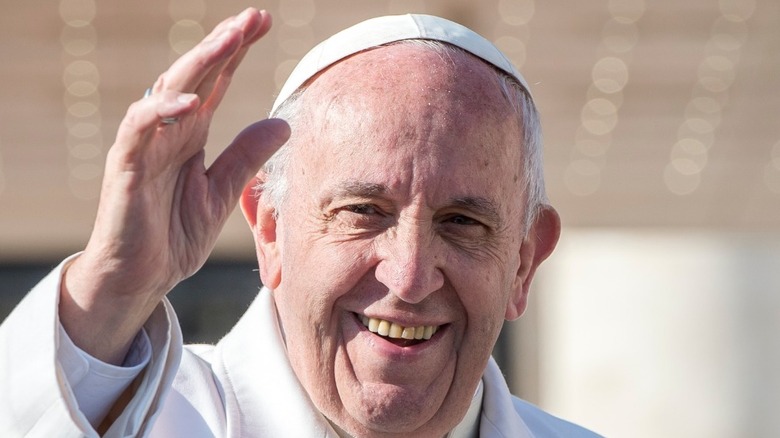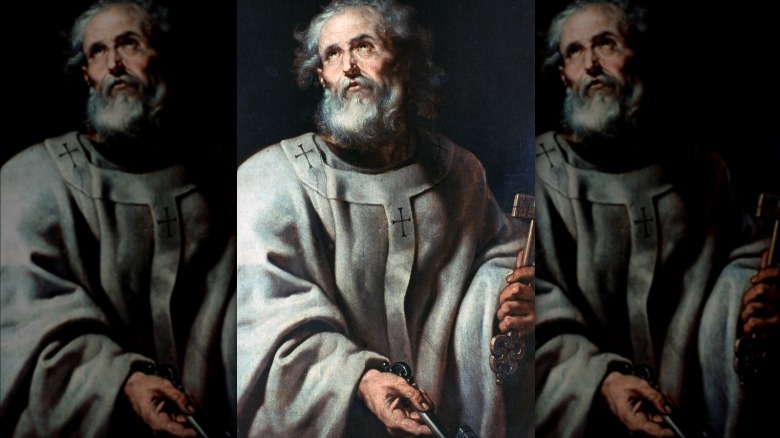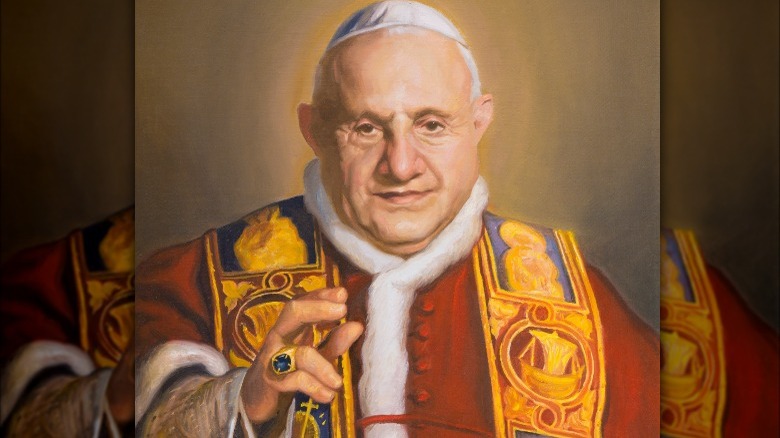The Subtle Detail You Missed In A Pope's Blessing
The pope is one of the most revered figures in the world, and has been for centuries. As the head of the Catholic Church, the pope is the spiritual leader of one of the largest religions in the world. As of 2019, the current pontiff, Pope Francis, was guiding more than 1.34 billion Catholics worldwide on their faith journey (per National Catholic Reporter).
As one of the oldest religious institutions in the world, Catholicism has developed many practices, traditions, and symbols along the way. From the celebration of sacraments to the acquisition of significant religious relics, there is a longstanding understanding of the importance of symbolism within this faith. One of the most recognizable symbols associated with Catholicism is known as the hand of benediction and is often used by the pope. Though it is seen as a sign of prayer or blessing, this hand signal actually has a more complex history and is an indication of a medical condition.
Its Origin Lies In A Medical Condition
The "Hand of Benediction" or "Pope's Hand" is a term used by some anatomy textbooks to identify what's actually a medical condition. According to anatomy professor Bennett Futterman, this hand signal is not just an arbitrary sign that the first popes thought looked cool or would be an interesting way to switch up their blessings (per CBS). The hand position, which consists of the fourth and fifth digits curled in, while the other three digits are extended, is the result of a medical condition that the Catholic Church's first pope, St. Peter, suffered from.
Also known as "preacher's hand," today this medical condition is commonly known as peripheral neuropathy, which is described as "damage to nerves outside of the brain and spinal cord" (per Osmosis). According to Futterman, St. Peter reportedly suffered from an injury to his ulnar nerve, which in turn made it impossible for him to fully extend his fourth and fifth fingers. There is also controversy over whether the affected nerve might have been the median nerve, due to the fact that it is responsible for movement all the way down to the fingertips of either hand.
Preacher's Hand as a symbol in religious art
Despite having a rather obscure origin story, this hand positioning is now very easily recognized all over the world. Though St. Peter's use of his hands in this manner was likely involuntary, all of the pontiffs that followed after him held their hands in the same way, reportedly out of respect for the Church's first pope (per CBS). Whether praying or bestowing a blessing, every pope since has frequently positioned his fingers this way, as have some bishops.
In addition to being used by the Church, the hand of benediction has also become a common symbol in religious art. According to the New Liturgical Movement, has become a frequent addition to art featuring various religious figures, including, popes, bishops, saints, and even God himself. As with the pontiff's using the sign of benediction with the masses over the centuries, you can also see the its continued use over time in the art as well.


